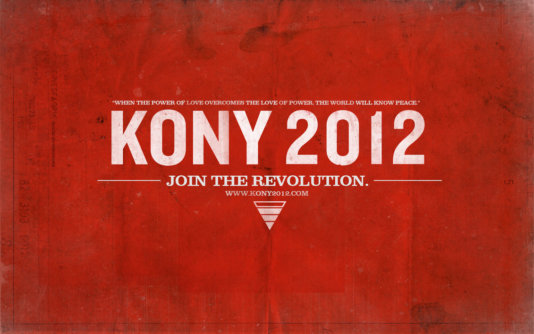- About
- Topics
- Picks
- Audio
- Story
- In-Depth
- Opinion
- News
- Donate
- Signup for our newsletterOur Editors' Best Picks.Send
Read, Debate: Engage.
| March 11, 2013 | |
|---|---|
| tags: | #Central African Republic, #child soldiers, #DRC, #Joseph Kony, #Kony 2012, #LRA, #South Sudan, #Uganda |
| located: | Central African Republic, South Sudan, Uganda |
| by: | Jack Bicker |
Just days after the release of last year's most successful youtube hit, Kony-2012's director was filmed on a passerby's mobile phone, pacing backwards and forwards on the streets of California, naked, and muttering nonsensically to himself about the devil.
It later transpired that Jason Russell - who had never previously experienced mental health difficulties - was suffering from a "schizophrenic psychotic episode", a form of "post traumatic stress" brought on by a huge, rebounded wave of irritated public scrutiny. Whereas it's hard not to sympathise with anyone experiencing such a life shattering moment, there is an other, tragic sense in which the dramatic outburst of Jason Russell's breakdown video aptly expressed an intense 100-million-strong media hysteria, funnelled down onto the shoulders of just one man.
That this latter (naked) video also went viral - gaining millions of views and sparking an almost universal rolling news coverage - suggests something about the very nature of the 'original' video's popularity. It's not just that we're interested in the scandal of naked celebrities, or that we enjoy their arm's-length downfall, instead, our current 24-hour news culture has its own empty momentum in which a topic can be judged newsworthy based on how many Facebook shares or tweets it garners, or by the extent to which it can be squeezed into a youtube frame.
It was this kind of ephemeral, digital awareness that propelled Kony-2012 to 100 million views so quickly, but which also facilitated a backlash too ferocious for Jason Russell to bear.
The fleeting format of the Kony-2012 video was one of the features that caused many of the initial negative responses. The slick and trendy pop-video, interspersed with clips of the director's cute, toddler son was obviously meant to appeal to the heart and not the head, which when additionally sprinkled with the stardust of many a glamorous A-list celebrity, quickly served to produce a counter-image of the campaign in which the video's creators emerged as self-promoting do-gooders. An image that created just enough of a hint of cynicism that when questions were raised about alleged financial irregularities at Invisible Children Inc., it wasn't difficult for the youtube-public to believe that it had all been too good to be true (despite later evidence suggesting the contrary).
The easily manipulated, one-click digital outrage that had propelled Kony-2012 to success, eventually turned out to be the rapid catalyst of its downfall.
One year on and the subject of the video - Joseph Kony, leader of the Lord's Resistance Army and a man responsible for destroying hundreds of thousands of lives - is still at large. Yes, more of us know his name, but evidently, and despite what we were led to believe, just knowing was never going to be enough.
And yet, according to many commentators, the Kony-2012 campaign was a 'game changer' that marked the beginning of a new era in campaigning: charities would have to rethink the way they communicate, taking into account the realities of a youth consciousness informed, in large part, by digital media. As Jason Russell himself recently commented to the Guardian, "This is a generation raised on an Instagram and a tweet. That's your news. That's your actual news."
However, as a recent Norwegian campaign sought to highlight, this mode of introducing any viewer - let alone young people - to the difficulties of life in lawless, underdeveloped countries is far from desirable. As the Africa for Norway project suggested, the confinement of NGO campaigns to fit into the limited vehicle supplied by digital media sites, represents a need to simplify the narrative, and reduce it to a stock image not unlike the oft quoted skeletal, fly covered black-skinned child of BandAid fame. In this way, the complex historical, ethnic, and geopolitical causes of the conflicts in central Africa in which Jospeh Kony plays a part, are reduced to a picture of an inaccessible, pantomime version of a genuine villain, and our incorrect perception of Africa as a doom laden continent of natural ineptitude is sustained.
If the legacy of the Kony-2012 phenomenon has not been to catch the villain they set out to apprehend, then equally, we should be at pains to represent Africa, its people and their stories in a manner that while indeed expressing the need to extend an international hand of brotherly solidarity, does so with an eye to sustaining a longer term sense of equal human dignity.
Keep up with the ongoing Invisible Children Inc. campaign.
By copying the embed code below, you agree to adhere to our republishing guidelines.

